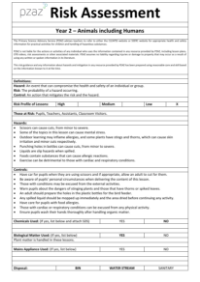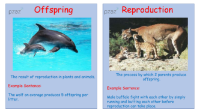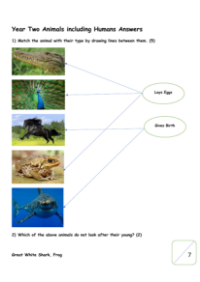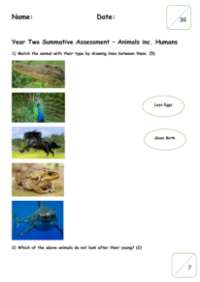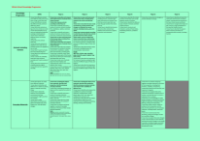Animals including Humans - Knowledge Organisers
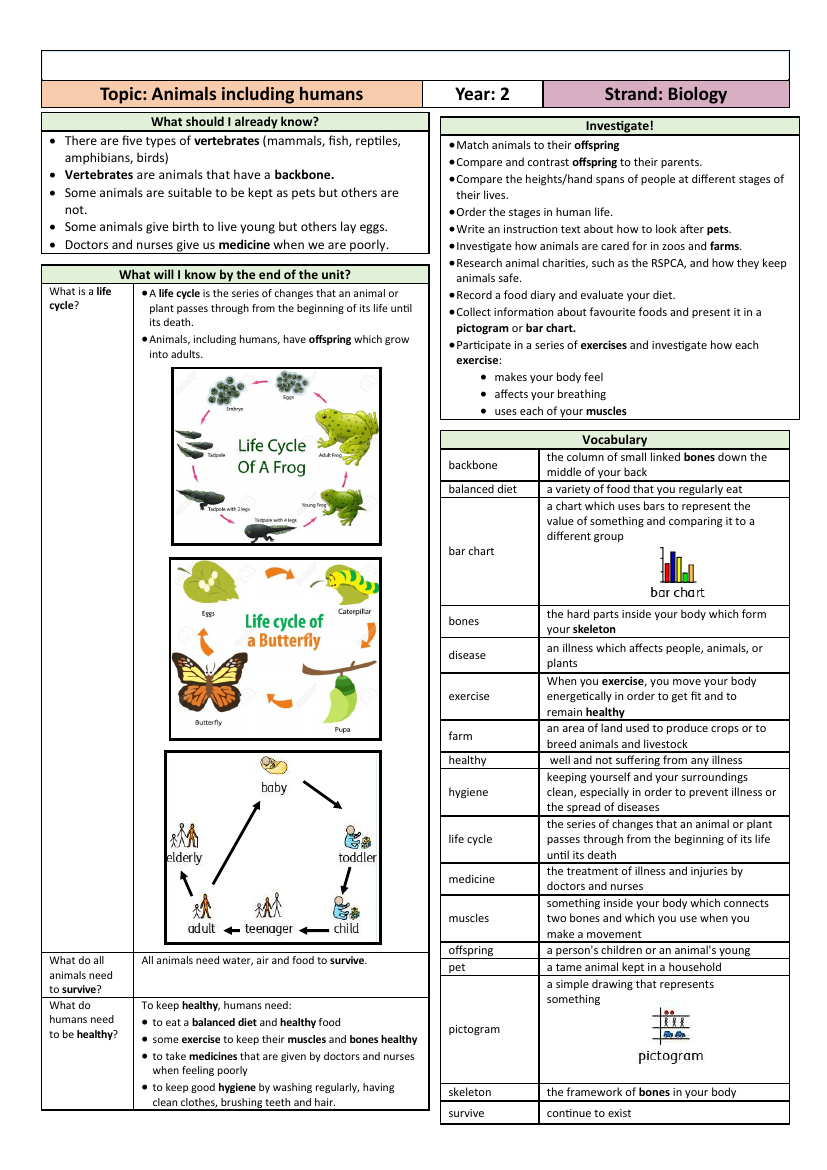
Science Resource Description
The topic 'Animals including Humans' for Year 2 students in Biology provides a comprehensive understanding of various biological concepts. Prior knowledge required includes an understanding of the five types of vertebrates—mammals, fish, reptiles, amphibians, and birds—all of which possess backbones. Students should recognise that while some animals are suitable as pets, others are not, and that animals can reproduce either by giving birth or laying eggs. The importance of medical professionals in treating illnesses is also highlighted. Key vocabulary terms such as 'backbone', 'balanced diet', 'bar chart', 'bones', 'disease', 'exercise', 'farm', 'healthy', 'hygiene', 'life cycle', 'medicine', 'muscles', 'offspring', 'pet', 'pictogram', 'skeleton', and 'survive' are introduced to enrich the students' scientific lexicon.
By the end of the unit, students will have a clear understanding of life cycles, the needs of animals for survival, and the essentials for humans to maintain good health. Through various investigative activities, such as comparing offspring to their parents, measuring physical growth, ordering life stages, and evaluating diets, students will actively engage with the material. They will learn that all animals need water, air, and food to survive, while humans additionally require a balanced diet, regular exercise, appropriate medical care, and good hygiene practices. Students will also be able to define 'offspring' and understand the importance of maintaining personal hygiene by brushing teeth, washing regularly, wearing clean clothes, and brushing hair.


